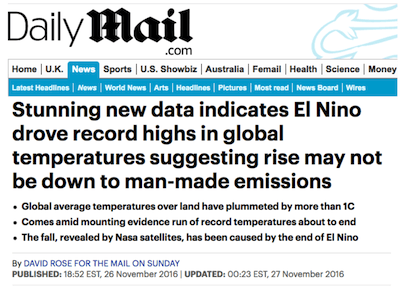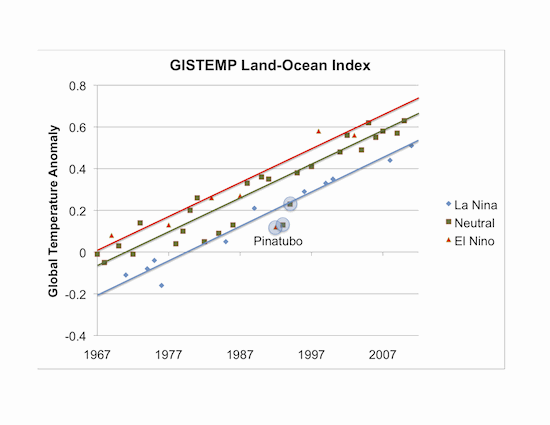

REVIEW
CLAIM: Stunning new data indicates El Niño drove record highs in global temperatures suggesting rise may not be down to man-made emissions.
Zeke Hausfather, Director of Climate and Energy, The Breakthrough Institute:
Even without the big El Niño spike, 2016 will be the hottest year on record, and 2015 the second hottest. Scientists have methods to remove the effect of El Niño on the temperature record. We can also see this in a simple example where we just remove the big El Niño-related temperature spike, but 2016 remains the warmest year in the surface temperature record:

The modest decline in temperatures in the past few months is a normal reversion after the end of the El Niño event. It has relatively little impact on the longer-term warming trend, which is the most scientifically relevant metric of climate change.
Steven Sherwood, Professor, University of New South Wales:
Temperature averages from satellite-based detectors are very noisy, and tend to exaggerate swings due to El Niño compared with other data sources. I would not attach much significance to big upswings or downswings over periods of only a few months, especially when other indicators, like sea ice, are suggesting acceleration of warmth. The long-term upward trend is clear in every source of data we have.
Victor Venema, Scientist, University of Bonn, Germany:
It is known that El Niño, an oscillation in the tropical Pacific, is a cause of short-term fluctuations of the temperature and precipitation. This should not be confused with long-term warming. This is clearly illustrated by this graph below that shows the warming of El Niño years, La Niña years (the opposite of El Niño), and neutral years individually.



